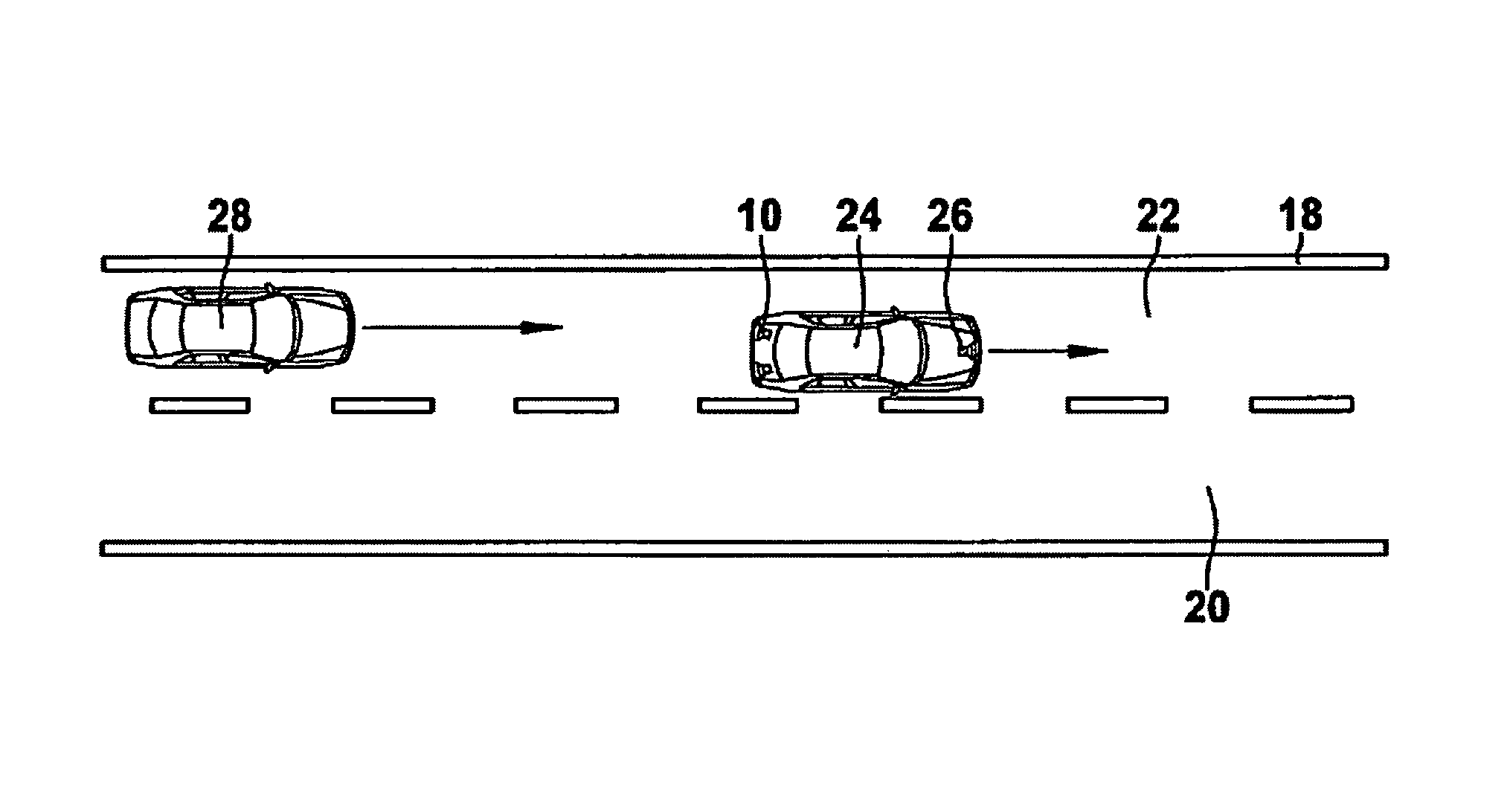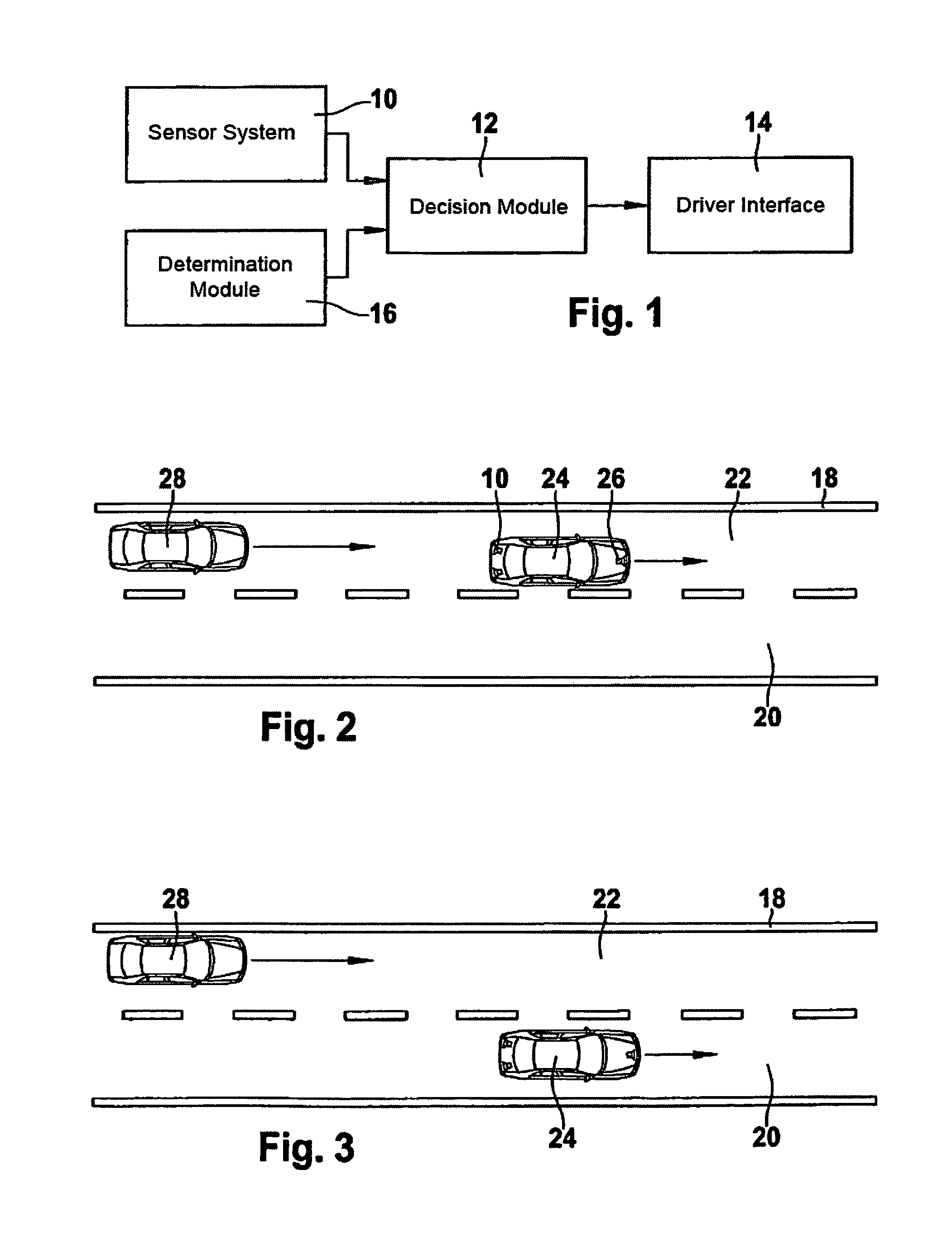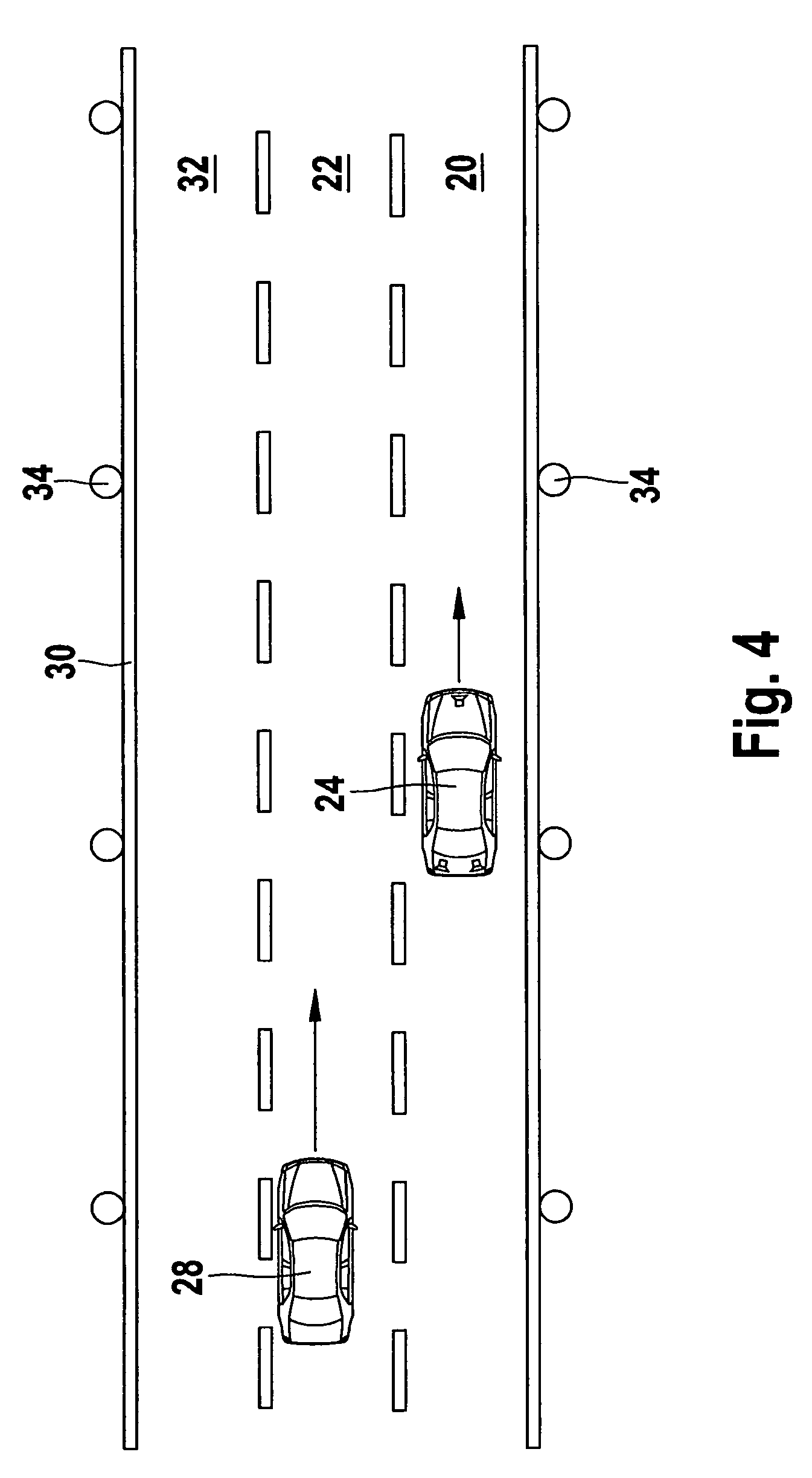Lane-change assistant for motor vehicles
a technology for motor vehicles and assistants, applied in direction finders using radio waves, instruments, reradiation, etc., can solve the problems of not knowing the exact width of the road lanes, affecting the reliability and reducing the accuracy of the lane-change assistan
- Summary
- Abstract
- Description
- Claims
- Application Information
AI Technical Summary
Benefits of technology
Problems solved by technology
Method used
Image
Examples
Embodiment Construction
[0017]The lane-change assistant shown in FIG. 1 includes a sensor system 10, such as a rear-space radar, to locate vehicles and other objects in the rear space of the own vehicle, a decision module 12 to decide whether a vehicle located by the rear-space radar is traveling on the directly adjacent left lane or on another lane, and a driver interface 14 to output a warning to the driver as a function of the decision result of decision module 12.
[0018]As usual with lane-change assistants, the decision made by decision module 12 is not only dependent upon the lane assignment of the located vehicle, but also upon the measured distance and the relative velocity of this vehicle. In most cases the output of a warning to the driver will occur only if it is detectable based on the traffic situation or based on actions of the driver such as the actuation of the turn signal indicator, steering actions and the like, that the driver intends to change lanes. Devices for detecting such a lane-chan...
PUM
 Login to View More
Login to View More Abstract
Description
Claims
Application Information
 Login to View More
Login to View More - R&D
- Intellectual Property
- Life Sciences
- Materials
- Tech Scout
- Unparalleled Data Quality
- Higher Quality Content
- 60% Fewer Hallucinations
Browse by: Latest US Patents, China's latest patents, Technical Efficacy Thesaurus, Application Domain, Technology Topic, Popular Technical Reports.
© 2025 PatSnap. All rights reserved.Legal|Privacy policy|Modern Slavery Act Transparency Statement|Sitemap|About US| Contact US: help@patsnap.com



